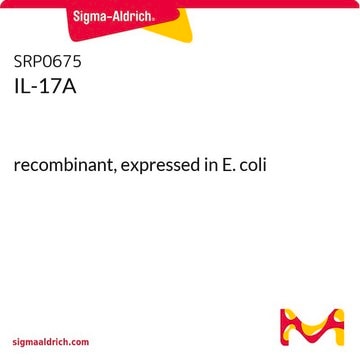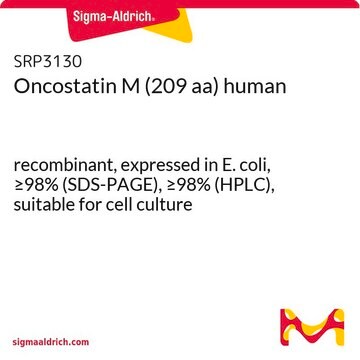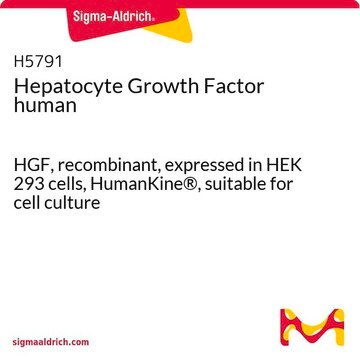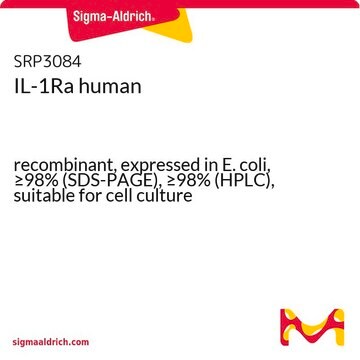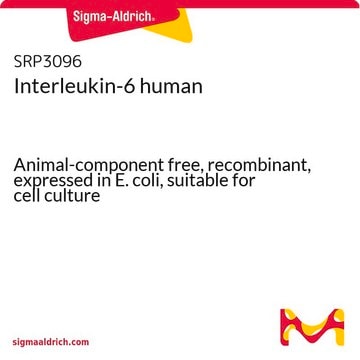H6541
Oncostatin M human
OSM, recombinant, expressed in HEK 293 cells, HumanKine®, suitable for cell culture
Synonym(e):
OSM
About This Item
Empfohlene Produkte
Biologische Quelle
human
Qualitätsniveau
Rekombinant
expressed in HEK 293 cells
Assay
≥95% (SDS-PAGE)
Form
lyophilized powder
Wirksamkeit
≤0.1-1.5 ng/mL EC50
Qualität
endotoxin tested
Mol-Gew.
dimer 30 kDa (glycosylated)
Verpackung
pkg of 5X10 μg
pkg of 10 μg
Methode(n)
cell culture | mammalian: suitable
Verunreinigungen
≤1 EU/μg
UniProt-Hinterlegungsnummer
Lagertemp.
−20°C
Angaben zum Gen
human ... OSM(5008)
Suchen Sie nach ähnlichen Produkten? Aufrufen Leitfaden zum Produktvergleich
Biochem./physiol. Wirkung
Physikalische Form
Hinweis zur Analyse
Rechtliche Hinweise
Lagerklassenschlüssel
11 - Combustible Solids
WGK
WGK 3
Flammpunkt (°F)
Not applicable
Flammpunkt (°C)
Not applicable
Analysenzertifikate (COA)
Suchen Sie nach Analysenzertifikate (COA), indem Sie die Lot-/Chargennummer des Produkts eingeben. Lot- und Chargennummern sind auf dem Produktetikett hinter den Wörtern ‘Lot’ oder ‘Batch’ (Lot oder Charge) zu finden.
Besitzen Sie dieses Produkt bereits?
In der Dokumentenbibliothek finden Sie die Dokumentation zu den Produkten, die Sie kürzlich erworben haben.
Unser Team von Wissenschaftlern verfügt über Erfahrung in allen Forschungsbereichen einschließlich Life Science, Materialwissenschaften, chemischer Synthese, Chromatographie, Analytik und vielen mehr..
Setzen Sie sich mit dem technischen Dienst in Verbindung.